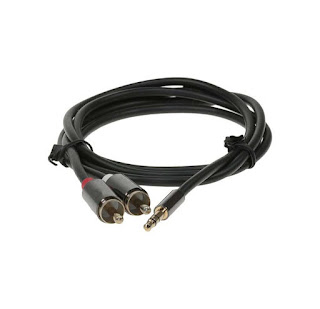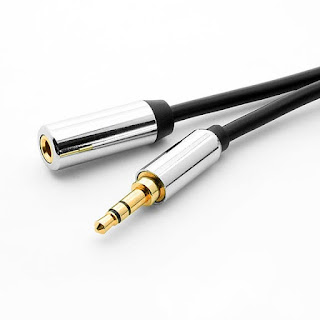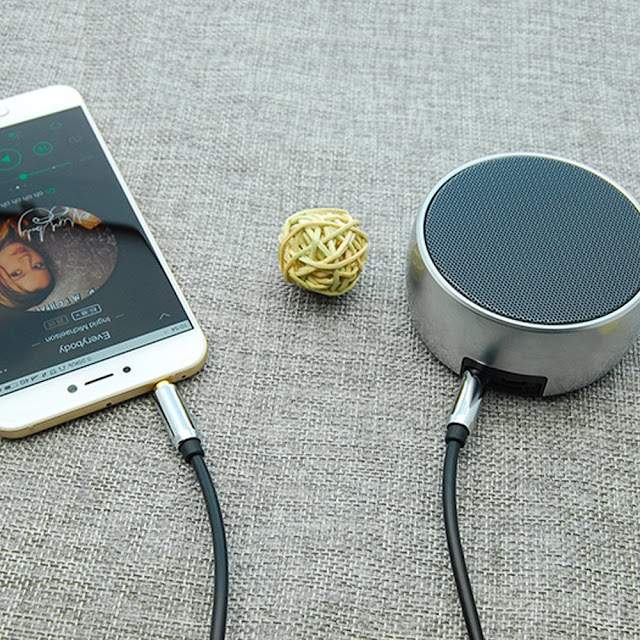40 years ago, Sony's Walkman TPS - L2 put two headphone jacks on a single device to enable music sharing. Seeing this, the idea of sharing music from a portable, personal device became popular. Once music became portable, it gave birth to many industries, one of which is the audio cable splitter. It is one of those gadgets that add convenience to an already convenient experience.
The idea behind it is simple. It's an accessory to headphones and music players that routes sound to two headphones simultaneously. This tiny little device has the ability to maintain the audio quality for two listeners at the same time. It is the go-to device when you want to plug in more than one headphones, mics or speakers to a single device.
There are multiple formats available for audio cable splitters. You can have 3.5mm ports and cables and you can have 2.5mm to 3.5mm cable if your headphones have a 2.5mm jack and your device a 3.5mm port.
Let's look at the different types of audio cable splitters:
Microphone Splitter and Headphone Splitter
As the names suggest, headphone splitters are for splitting sound output and microphone splitters are for splitting input sound. The former is a passive splitter, which means that it does not require a power source, but is 'plug and play'; whereas the latter is an active splitter and therefore requires a power source.
What you must consider before buying an audio splitter for headphones:
1. Dual Splitter VS Multi Splitter
There are audio cable splitters that split the sound into more than two ports. You can use this for multiple people when the source device is only one. Whether you choose a dual splitter or a multi splitter, the quality of sound is the same across all devices.
2. Headphones or Headsets?
If your requirement is just audio out, then you need a headphone splitter for which you can choose the one with the 2.5mm to 3.5mm cable, so you can plug in two headphones to it. But if you need a microphone and headphones, then you will have to opt for one that allows this configuration.
There are plenty of audio cable splitters available in the market. Here's a comprehensive look at some of them:
- 6-Way Snowflake Shaped Headset Hub:
As the name suggests, it has six ports. One will connect to the source device and you can use the others to share music with your fellow listeners. It makes for a great audio sharing device.
- Dual Headphone Jack:
Dual headphone jacks are one of the most commonplace audio cable splitters available. When you have to connect just two headphones to a source audio device, this is the perfect one to choose from.
- Five Jack Audio Splitter:
Even though you have up to five jacks here, you can be sure that it does not compromise on audio quality. It functions similar to the 6-way splitter.
- 3.5mm Stereo Audio Jack Adapter:
This one has TRRS female and ports for headphones and TRRS male jack in the 3.5mm variant for stereo sound.
Conclusion
An audio cable splitter is an important gadget for anyone who likes to share audio. Since movies like Begin Again have made them popular and special, they are even more in demand. They are great for when you want to dance with a partner but only have your portable music player to share music from, or even for a walk in the city on a first date. You are sure to score some brownie points for such a neat little device that enhances an experience like this.
The 2.5mm to 3.5mm cable is the most common one out of the ones listed here and is available almost anywhere. Always keep a pair handy because you never know when you might need it!
The Walkman TPS - L2 changed the private music listening experience on top of the cultural impact of taking our music wherever we go.
Originally Posted here; https://www.sooperarticles.com/shopping-articles/electronics-articles/guide-choosing-right-audio-cable-splitter-1751115.html
You Can Find More Cables here;

 Log in with Facebook
Log in with Facebook 












